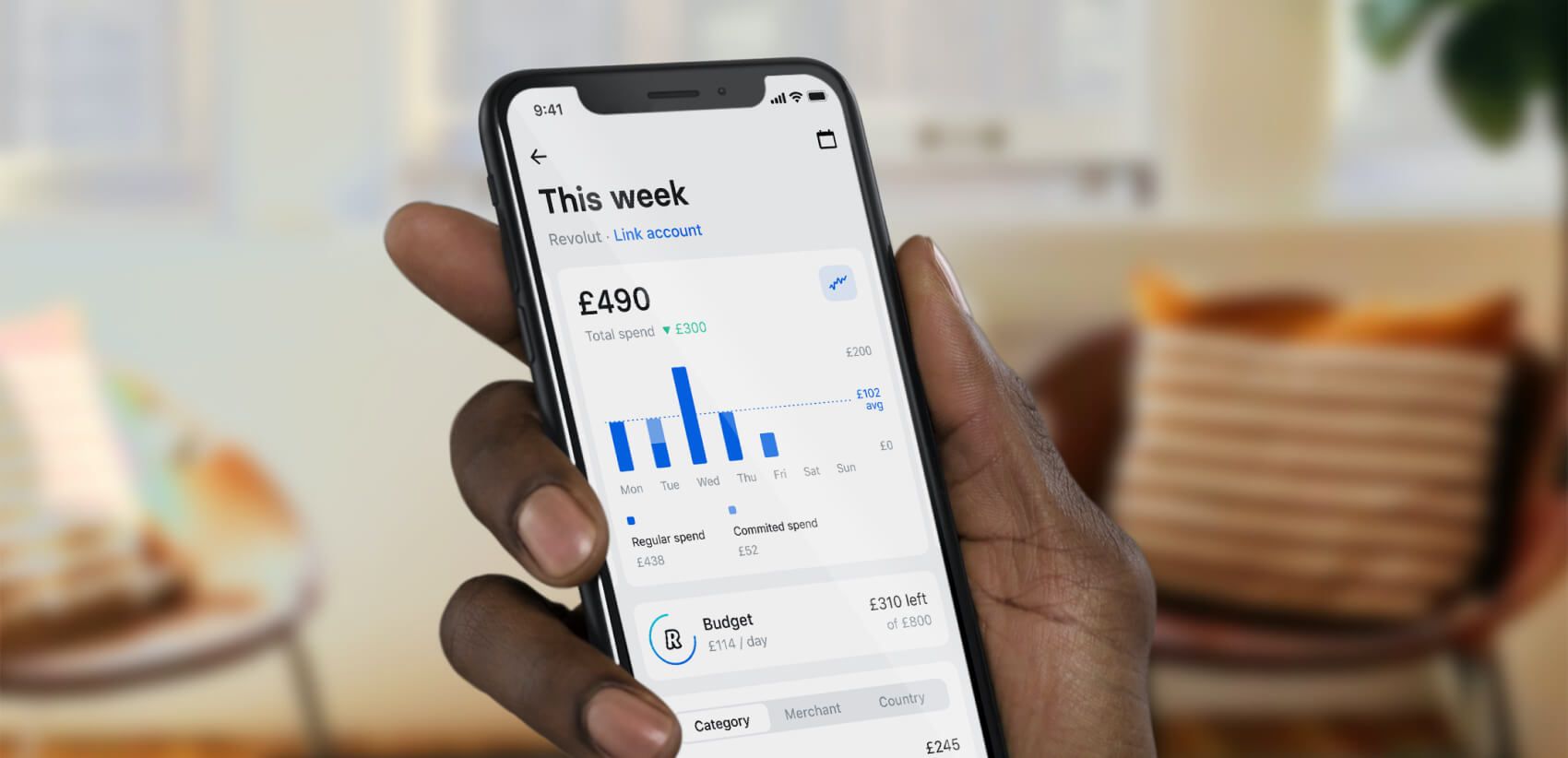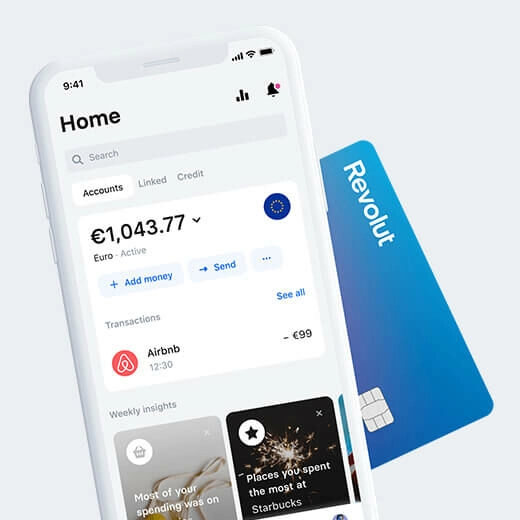How Revolut grew its customer base by 100%+ while saving 100+ hours a week with Lokalise
“The automated pipeline we've been able to create around Lokalise is great – it requires little input from human project managers, and it gives us direct lines of collaboration with our in-house translators and localization partners.”
Akshat Mittal, Head of Localization at Revolut
Akshat Mittal and Jorell Langmar
Head of Localization and Head of Content Localization at Revolut
Localizing from the early days
Celebrating seven years in 2022, Revolut is one of the most successful UK fintech startups of all time. Just two years ago, Revolut had 9 million customers. Now they’ve grown to 20 million+ customers. So what’s the secret to their success?
Localization. In fact, in 2021 they credited their 186% customer growth to rapid language rollout.
When we last spoke, Revolut told us about their first step into localization, and how they turned to Lokalise when they were a team of 20 to 30 people with no dedicated localization team of their own. Together, we were able to demonstrate the power of Lokalise right out of the gate, and that early success drove momentum for the full-fledged localization team Revolut has today.
We thought we'd check in to see how Revolut’s been doing, and how the business continues to grow. We sat down with Akshat Mittal, Head of Localization at Revolut, and Jorell Langmar, Head of Content Localization at Revolut, to find out how one of the UK's most valuable fintechs uses localization and automation to scale its growth.

Lokalise’s flexibility enables localization at scale
Scalability, flexibility, and speed to market were all important considerations in Revolut's initial decision process. Years later, Lokalise continues to meet or exceed expectations in all three areas by providing:
- A robust, flexible platform that allows for custom workflows and is constantly evolving to incorporate new features, integrations, APIs, webhooks, and emerging technologies.
- An adaptable platform which enables Revolut to tightly integrate Lokalise into internal systems and offer a one-stop solution.
- The ability to handle the heavy lifting of scaling across a global organization and increasing translation volumes/content formats.
Revolut’s Head of Localization, Akshat offered a few thoughts on the matter:
“Though we've been using Lokalise for a long time, what's changed is that we’ve tripled our team and increased the volume of content we process exponentially. The flexibility of Lokalise enables us to integrate everyone into the localization pipeline, and has made it possible to increase the speed of rolling out to new markets.”
Akshat and Jorell both work closely with the Lokalise team. Throughout the initial implementation and expansions over two years, Lokalise provided ongoing, hands-on guidance and expertise.

Revolut's localization automation – a finely tuned process that runs like clockwork
The key to Revolut's process can be distilled into two words – centralization and decentralization.
Almost all of Revolut’s localizable content is managed in Lokalise – including the web app, mobile app interfaces, in-app and push notifications, emails, FAQs, and blog posts. And each type of content makes it to Lokalise in different ways. For mobile apps, once the designs and copy are ready, developers create or update keys in Lokalise, creating a single source of truth.
Revolut has a centralized approach for requesting, managing, and delivering translations. All those things involve working asynchronously, at their own pace. But when any changes are made, stakeholders can feel safe in the knowledge that the automation processes in place will make sure translations are accurate, delivered effectively, and spread across the team. Plus, they all stick to a 1-to-3 business day turnaround.
The content gets effectively split between an in-house team of linguists (language owners and copywriters) and external LSPs. This helps Revolut balance the load, achieve a fast and predictable turnaround time for priority content, and cover spikes in volumes, attrition, or team member absences. The best part? They don’t need to lift a finger for these things to happen daily.
Note: If you’re interested in learning exactly how Revolut has built out these automations, take a look at this.
As Akshat mentioned, the automated pipeline they’ve been able to create around Lokalise is quite impressive – it requires very little input from human project managers, and it gives them direct lines of collaboration with their translation and localization partners. This approach has allowed them to increase rollout speed to new markets.
“Without automated task creation and assignment, we would need a bigger team to deal with this part alone. Plus, the way assigning is done now probably wouldn't even be possible manually. Automation provides many benefits, including scalability and better content distribution. If you're producing a high content volume, automation is a must-have to meet tight deadlines,” Jorell comments.
And the automations don’t stop there. Revolut has a packed roadmap of additional automations to smooth out localization operations. For example, the team is automating translation quality report generation, which will save an additional 400 hours/month for language owners collaborating with LSPs.
Without automated task creation and assignment, we would need a bigger team to deal with this part alone. Plus, the way assigning is done now probably wouldn't even be possible manually. Automation provides many benefits, including scalability and better content distribution. If you're producing a high content volume, automation is a must-have to meet tight deadlines.
Mastering scale without losing out on quality
Being a global fintech with 20 million+ customers, the scope of Revolut's daily operations is considerable. To serve these markets, Revolut churns out content at a rate of roughly 60K words per day in 22 languages.
Localization at scale introduces new challenges, such as the ability to cover higher translation volumes within tight timelines, collaborate with multiple linguists/partners, and ensure the consistency of translations.
Note: If you’re interested in learning how to navigate the challenges around scaling with external language partners, take a look at this.
Jorell believes that localization operations are about "product, process, and people.” Since they have products (Lokalise and internal products/automations) and processes sorted, adding new languages is a matter of plugging the gaps with more translators and reviewers.
With so many languages supported, and a constantly growing team of content creators and translators, how does Revolut keep teammates aligned, eliminate translation errors, keep brand voice consistent, and maintain quality, all within a turnaround time of 3 business days for translations?
Jorell’s vision is to have a copywriter and a language owner committed to each of the 22 languages that Revolut supports.
“Our goal is to have perfectly localized content. It's extremely important to have high-quality content that sounds fluent and native, as this is the first step to gaining clients' trust in local markets,” says Jorell.
Our goal is to have perfectly localized content. It's extremely important to have high-quality content that sounds fluent and native, as this is the first step to gaining clients' trust in local markets
Jorell and his team have a few approaches to reach that goal.
Linguistic quality assurance program:
- Two pairs of eyes see every translation (translation + review)
- Errors get logged and categorized based on the internal LQA framework during the revision process
Visual context:
- The Figma plugin is used to provide context by pushing screenshots into Lokalise, allowing translators to move faster and produce higher quality work
Screenshots get added to Lokalise for content that doesn’t originate from Figma - In-context previews in native integrations are built between Lokalise and content management tools
“If you don't provide high-quality content, you'll have a higher user churn rate and lower retention – people won't trust you if you don’t speak their language.”

Financially sound growth through localization
When asked about Revolut's growth strategy, Jorell says that local markets are more important than ever for Revolut’s growth and continued competitiveness.
“We support Revolut in languages that are important to our customers. For every new language we consider many factors such as the number of customers we would benefit, and the complexity of supporting the language.”
As the company's products have been live for seven years now, the amount of content that requires translation into a new language is massive and can create a huge backlog. Thus, adding a new language also means taking on at least two employees to handle the daily volumes.
As the company continues to scale its operations globally, they've turned to automation to get the most out of their investments, and to continue to strive for only the highest level of service.
“Our content volumes are getting higher, and if you need to maintain a certain level of quality or improve it, you need to find new approaches to remain efficient. For us, being good is not enough – we strive for perfection.”
Data:
- 20+ languages
- 20 million+ customers
- 30+ countries and regions
Localization made easy.
Try it free or let us show you how it works
Read more case studies

How Lokalise contributed to Revolut's massive growth

ESL Gaming shortens time to market with a centralized approach to translation
Case studies

Behind the scenes of localization with one of Europe’s leading digital health providers
Read more Case studies
Support
Company
Localization workflow for your web and mobile apps, games and digital content.
©2017-2026
All Rights Reserved.

